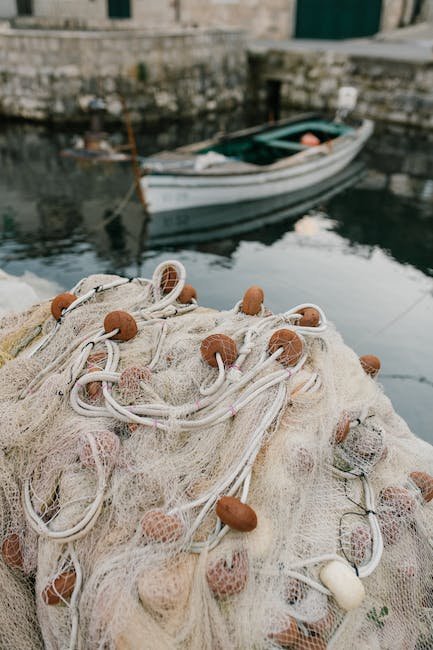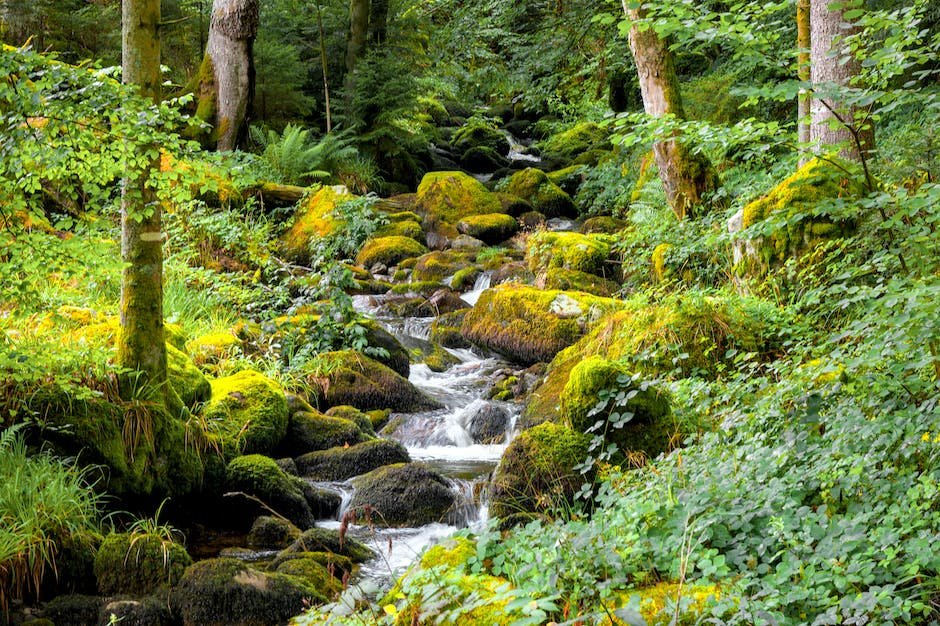Now Reading: How to Forage for Edible Plants in the Wild
-
01
How to Forage for Edible Plants in the Wild
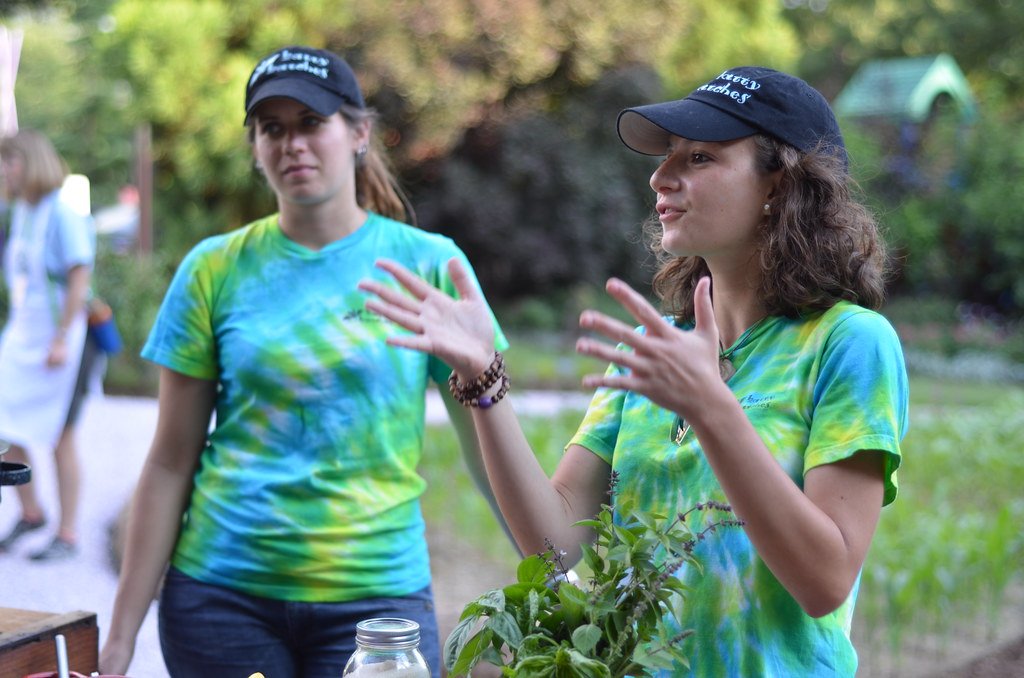
How to Forage for Edible Plants in the Wild
Venturing into the untamed wilderness, where the symphony of rustling leaves and birdsong intertwines, holds an allure that tugs at our primal instincts. Amidst this verdant realm lies a secret pantry, filled with nature’s bountiful gifts – a treasure trove of nourishment waiting to be discovered. Foraging for edible plants in the wild not only reconnects us with our ancestral roots but also bestows upon us the knowledge of survival in the most natural form. As we traverse this unknown terrain, armed with the wisdom of centuries past, let us embark on a journey of exploration and enlightenment, uncovering the exquisite treasures that Mother Nature has bestowed upon us.
Table of Contents
- Foraging for Edible Plants: A Journey into the Wild
- Exploring the Natural Bounty: Identifying Common Edible Plants
- Tempting Your Taste Buds: Preparing and Cooking Wild Edibles
- The Art of Sustainability: Responsible Foraging Practices
- Cautionary Tales: Avoiding Toxic Look-alikes
- Q&A
- Concluding Remarks

Foraging for Edible Plants: A Journey into the Wild
Embarking on a journey into the wild to forage for edible plants is an exhilarating and rewarding experience. It not only connects us with nature but also allows us to explore the rich diversity of flavors and nutrition that can be found right at our fingertips.
As we venture into the wilderness, we find ourselves surrounded by a plethora of plant species, each with its own unique characteristics and uses. Some plants, like the vibrant green nettle, possess powerful medicinal properties that can be brewed into a soothing tea. Others, such as the wild garlic, add a delightful pungency to our culinary creations.
To ensure a successful foraging expedition, it is crucial to arm ourselves with knowledge. Researching local flora and fauna, understanding their growing seasons, and learning to identify distinguishable features are paramount. It is equally essential to recognize plants that offer nutritional benefits, like the nutrient-dense dandelion greens or the antioxidant-rich berries of the blackberry bush.
- Preparation is Key: Before heading into the wild, equip yourself with a sturdy basket, a pair of pruning shears, and a field guide on edible plants.
- Practice Caution: While foraging, always double-check the identification of a plant before consuming it. Some plants may closely resemble poisonous varieties and can have adverse effects on health.
- Respect Nature: When harvesting, remember to take only what you need and leave behind enough for the plant to regenerate and sustain the ecosystem.
- Enjoy the Harvest: Once you’ve gathered an assortment of wild edibles, unleash your culinary creativity and savor the unique flavors and textures nature has provided.
So, embark on your wild foraging adventure and discover the hidden gems that nature has to offer. Immerse yourself in the serenity of the outdoors, as you acquire an understanding of the bountiful edible plants that thrive amidst the untamed beauty of the wild.
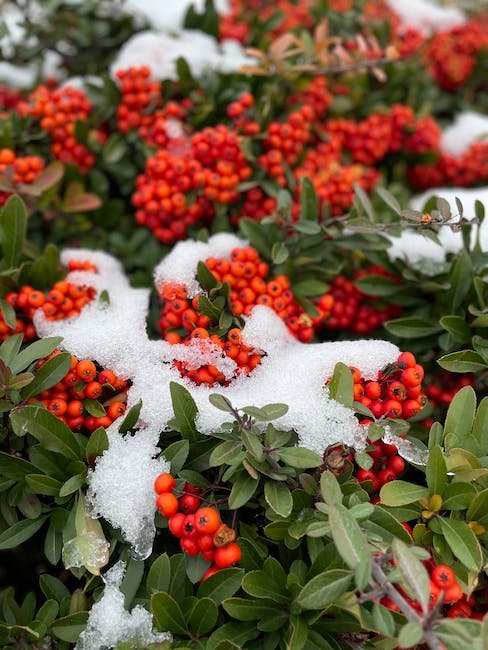
Exploring the Natural Bounty: Identifying Common Edible Plants
Venturing into the untamed wilderness can be an exhilarating experience, especially when you stumble upon nature’s edible treasures. In this guide, we will unveil a few commonly found edible plants that are bestowed upon us by Mother Nature herself. Remember, identifying these plants with absolute certainty is essential, as some look deceptively similar to their poisonous counterparts. So, keep your senses alert and take note of their distinguishing features.
1. Dandelion
When it comes to edible plants, dandelions top the list with their vibrant yellow blooms and playful tufts. Not just a weed in your backyard, these resilient plants have a variety of culinary uses. The young leaves, rich in vitamins and minerals, can be added to salads for a nutritious twist. Moreover, their flower heads can be transformed into vibrant dandelion wine or even a delightful tea.
2. Nettles
Be cautious, for beneath their prickly exterior lies an edible green powerhouse! Despite their sting, nettles are a forager’s delight. Packed with iron and protein, these greens can be harvested in the springtime. Once cooked or dried, their sting is neutralized, making them perfect for soups, teas, or even pesto. Don’t forget to wear gloves when handling these feisty plants!
3. Wild Garlic
Prepare to be captivated by the aromatic allure of wild garlic as you stumble upon their emerald carpets in woodland areas. With a distinctive smell, they are easily recognizable by their long, slender leaves and delicate white flowers. These magnificent plants can be a welcome addition to your culinary repertoire. From homemade pesto to a flavorsome addition to stir-fries, wild garlic never fails to infuse a dish with its unique zest.
Remember, this list is just a glimpse of the abundance of edible botanical wonders that await explorers in the great outdoors. However, it’s crucial to arm yourself with knowledge, consult experts, and verify your discoveries before indulging in the natural bounty. So, gear up, embrace the adventure, and savor the flavors bestowed upon us by the magnificent world of edible plants!
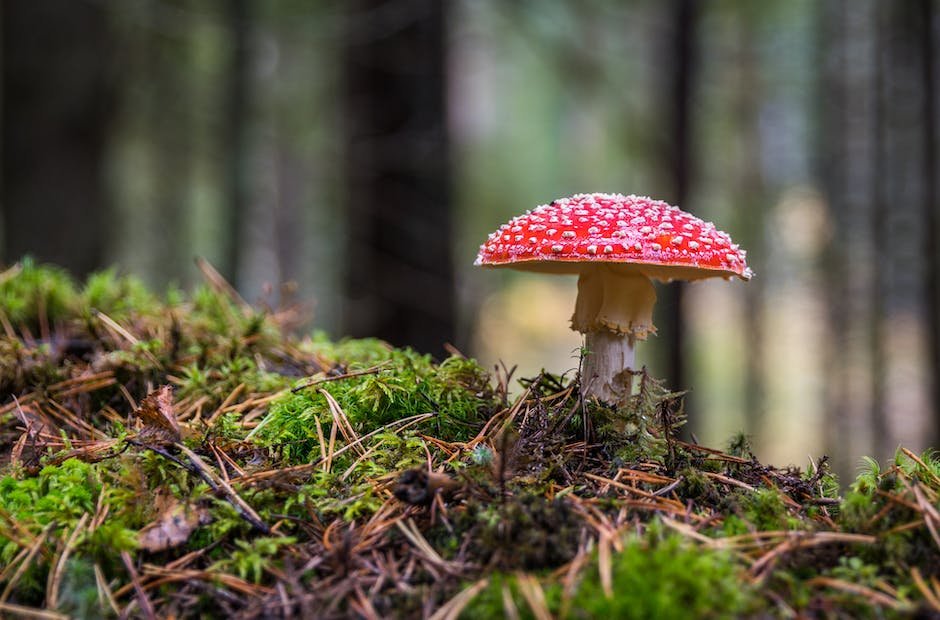
Tempting Your Taste Buds: Preparing and Cooking Wild Edibles
The world is filled with an abundance of wild edibles waiting to be explored and enjoyed. From delicate mushrooms to vibrant greens, the possibilities for expanding your palate are endless. In this section, we will delve into the art of preparing and cooking these beautiful gifts from nature, and show you how to tempt your taste buds with wild flavors.
Foraging Basics:
Before embarking on your foraging adventure, it’s crucial to understand the basics. Always be certain of the edible plants you are gathering, as some wild varieties can be toxic. Familiarize yourself with field guides or take a foraging class for added safety. Remember to respect the environment by taking only what you need and leaving the rest for nature.
Here are a few guidelines to keep in mind:
- Identify the plant or mushroom accurately
- Learn about any potential look-alikes and their distinguishing features
- Collect from areas free of pollution or pesticides
- Gather in small quantities, allowing the plants to regenerate
Cooking Wild Edibles:
Once you’ve procured your wild ingredients, it’s time to start creating culinary magic. Wild edibles offer unique flavors that can elevate any dish, making them a perfect addition to your cooking repertoire.
Here are a few cooking techniques to highlight the natural taste of your foraged treasures:
- Sautéing: Heat a pan with a drizzle of olive oil or butter, then add your wild edibles. Sauté until tender and slightly browned, enhancing their delicate flavors.
- Infusing: Experiment with infusing oils, vinegars, or spirits with wild herbs. Simply place clean, dried herbs in a bottle, cover with your chosen base, and let the flavors meld together over time.
- Crisping: For an irresistible snack, try crisping wild leaves in the oven. Toss them in olive oil, sprinkle with sea salt, and bake at a low temperature until they become crunchy and delectable.
By understanding the basics of foraging and exploring different cooking techniques, you can create a world of tantalizing flavors with wild edibles. So why not embark on a culinary adventure and let your taste buds savor the untamed wonders of nature?

The Art of Sustainability: Responsible Foraging Practices
Foraging, the ancient practice of gathering wild plants and fungi, is not only a way to reconnect with nature but also a means to promote sustainability. By understanding and applying responsible foraging practices, we can ensure the preservation of natural ecosystems for generations to come.
One of the key principles of responsible foraging is to respect biodiversity. When venturing into the wilderness, it is essential to familiarize ourselves with the diverse range of plants and mushrooms that exist in our surroundings. We must educate ourselves on species identification to avoid harvesting endangered or protected varieties. By preserving the natural balance of flora and fauna, we allow ecosystems to thrive and adapt to changes in climate and habitat.
Harvesting and collecting in a sustainable manner is crucial to minimize our impact on fragile ecosystems. Always remember to only take what is necessary, leaving behind plenty for other foragers, wildlife, and the plant’s regeneration. Be mindful not to damage the root systems or essential parts of the plant when harvesting. Careful and responsible collecting ensures the continued growth and survival of the species.
Suggested practices for responsible foraging:
- Research: Before setting out on a foraging adventure, research local regulations, permits, and restrictions. Understand the seasonality and limits of the plants and fungi you seek. Knowledge is the key to responsible practice.
- Leave No Trace: Respect the natural environment by leaving it as you found it. Avoid trampling on areas that could disrupt delicate ecosystems and refrain from littering or leaving behind any non-organic waste.
- Share knowledge: Encourage community engagement and the sharing of responsible and sustainable foraging methodologies. Collaborate with local environmental organizations or foraging groups to promote the understanding and protection of wild resources.
- Continuous learning: As responsible foragers, it is important to remain open to new information, insights, and scientific research. By expanding our knowledge and skills, we can adapt and refine our practices to better support sustainability.
By embracing the art of sustainability through responsible foraging practices, we contribute to the conservation of our natural heritage while enjoying the abundance and beauty that nature provides.
Cautionary Tales: Avoiding Toxic Look-alikes
When it comes to our safety, it is crucial to be aware of the potential dangers lurking in our everyday lives. In this cautionary tale, we explore the importance of being able to identify toxic look-alikes and how they can pose a significant risk to our well-being.
1. Plants: Nature’s beauty can sometimes conceal hidden dangers. Some toxic plants closely resemble harmless ones, making it essential to familiarize ourselves with their distinctive features. From the innocent-looking berries of the deadly nightshade to the striking similarities between water hemlock and wild parsnip, a misidentification can have grave consequences.
2. Food: The allure of delectable edibles can often cloud our judgment. It is imperative to exercise caution, especially when consuming wild mushrooms or even certain seafood. Differentiating between the safe and toxic varieties can be a matter of life and death. So, double-check and consult experts if you’re ever in doubt.
3. Household Products: Even within the comfort of our own homes, peril can be found. Numerous household items exhibit similar appearances to harmful substances. Laundry detergent pods can mistakenly be taken for candy by children, while certain cleaning agents may look like refreshing beverages. Vigilance is key to safeguarding ourselves and our loved ones from accidental poisonings.
In this cautionary tale, we must remember that looks can be deceiving. By educating ourselves about toxic look-alikes and staying vigilant, we can protect ourselves and minimize the risks associated with these potential hazards.
Q&A
Q: Why should I consider foraging for edible plants in the wild?
A: Foraging allows you to connect with nature and discover a new world of flavors in the wild. It’s a sustainable way to source food and offers the satisfaction of finding fresh, free ingredients.
Q: How can I identify which plants are safe to eat?
A: It’s essential to educate yourself on plant identification before venturing out. Study field guides and attend workshops to learn about the characteristics of edible plants in your region. Practice identifying plants with an experienced forager to gain confidence.
Q: Are there any dangers or things to watch out for when foraging?
A: Yes, it’s crucial to be aware of potential risks. Always avoid picking plants in polluted areas or near busy roads. Be cautious of poisonous lookalikes and take care not to damage the ecosystem by foraging sustainably and responsibly.
Q: Where is the best place to start foraging for beginners?
A: Begin your foraging journey in your own backyard or local parks, where familiar plants can be found. Gradually explore nearby forests or meadows and join local foraging groups or workshops to learn from experienced foragers in your area.
Q: Do I need any special equipment for foraging?
A: Foraging requires minimal equipment. Bring along a good field guide, a basket or bag to collect your finds, and a small knife or scissors for gathering. It’s also helpful to bring a water bottle and wear comfortable clothing and footwear.
Q: Are all parts of the edible plants safe to consume?
A: Not necessarily. Some plants may have edible leaves but toxic roots, seeds, or berries. It is important to research each plant thoroughly to determine which parts are safe for consumption and how to prepare them.
Q: Is foraging legal everywhere?
A: The legality of foraging depends on your location and the specific rules governing wild plant harvesting. Always familiarize yourself with local laws and regulations before foraging to ensure you are acting within the legal boundaries.
Q: How can I ensure I am foraging sustainably?
A: Sustainability is key when foraging. Only pick what you need and leave behind enough plants to support their local ecosystem. Avoid endangered or rare plants, respect private property, and never forage on protected lands without permission.
Q: Are there any common edible plants that are easy for beginners to identify?
A: Yes, some easily identifiable edible plants are dandelions, chickweed, plantain, and nettles. These plants often grow abundantly in various environments and can be a great starting point for novice foragers.
Q: How can I incorporate foraged plants into my meals?
A: Foraged plants can add unique flavors and textures to your dishes. Use them in salads, stir-fries, soups, or even for making herbal teas and infusions. Experiment and be creative with your new-found ingredients.
Concluding Remarks
As we bring this journey of exploration and foraging to a close, the untamed wilderness has revealed its secret treasures, hidden amidst the verdant tapestry of nature. With determined steps, we ventured into the wild, our senses attuned to the symphony of rustling leaves, singing birds, and the whispering winds. We sought not just sustenance, but a connection with our primal instincts, a dance with the ancient knowledge passed on through generations.
Through the intricate maze of flora, we have learned to discern friend from foe, the delectable from the deadly. The quest for edible plants in the wild is not merely a gastronomic endeavor; it is an invitation to marvel at the seamless harmony of earth’s bounty. We have embraced the subtle nuances of nature’s creations, from the tender petals of wild violets to the robust flavors of dandelion greens.
Along the path less traveled, we reveled in a timeless ritual shared by our ancestors, an exhilarating chase for sustenance in the great outdoors. We discovered that mother nature possesses an uncanny ability to nurture not only our bodies, but also our spirits. As we absorbed the wisdom granted by her, we realized that it is not just about filling our baskets, but understanding the delicate balance that sustains life in every nook and cranny of this sprawling tapestry.
Let us remember, however, that foraging demands respect and reverence. The wild embraces us graciously, gifting us with nourishment, but we must reciprocate by treading lightly and leaving behind no trail of destruction. Our quest for sustenance is allied to our responsibility as guardians of nature’s generosity.
As we bid adieu to this enchanting journey of foraging for edible plants in the wild, let us cherish the memories we have crafted, the tastes and scents imprinted in our minds. Armed with newfound knowledge and admiration for the enduring resilience of nature, we carry forth an eternal love affair with the wild, nurturing a heartfelt appreciation for the gifts bestowed upon us by the untamed.
Take a moment to inhale the scent of the trees, to listen to the ethereal symphony of the forest, and to etch the colors of foliage into your memory. Next time you journey into the wilderness, let your senses soar with the flight of a hawk, dance with the rhythm of the flowing stream, and savor the succulent rewards nature lays at your feet.
Forage on, fellow adventurers, and may your encounters with the wild yield not only sustenance but also a profound connection to the roots of our existence. Farewell, until we meet again amidst the embrace of nature’s embrace.
As an affiliate, my content may feature links to products I personally use and recommend. By taking action, like subscribing or making a purchase, you’ll be supporting my work and fueling my taco cravings at the same time. Win-win, right?
Want to read more? Check out our Affiliate Disclosure page.

